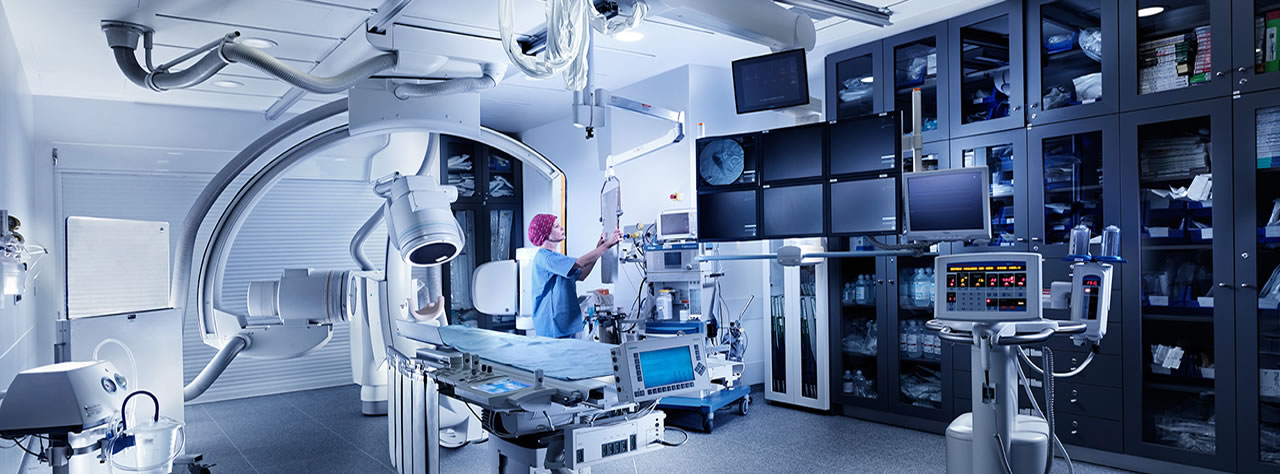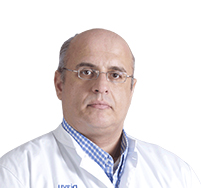- HYGEIA
- Vision & Mission
- Timeline
- Organizational structure
- Press Releases
- Social responsibility
- Awards and Distinctions
- Human Resources
- Scientific & Training activities
- Articles – Publications
- Our Facilities
- Magazines
- Healthcare Programs
- Doctors
- Services
- Medical Divisions & Services
- Imaging Divisions
- Departments
- Units
- Centers of Excellence
- Emergency – Outpatient
- Nursing Service
- Ambulances
- Patients
- Hygeia
- Υπηρεσίες
- Ιατρικά Τμήματα & Υπηρεσίες
Interventional Radiology

Interventional Radiology is a branch of Radiology which, apart from diagnosing certain conditions, also assists in treating them. Interventional Radiologists are radiologists who have been trained in using special microscopic tools and treatments, usually by inserting special catheters or needles in the targeted organs under imaging guidance.
Many cases that required surgery in the past may now be treated non-surgically. Interventional radiology treatments are less risky and painful, while recovery is faster compared to open surgery. Interventional Radiologists work closely with the clinical physicians of each specialty, so as to offer the most contemporary and suitable treatment to patients.
The following procedures are being performed at the HYGEIA Interventional Radiology Department:
- Diagnostic digital transarterial angiography on all organs (brain, neck, spinal cord, chest, abdomen, viscera, upper and lower limbs)
- Diagnostic venography
- Percutaneous RF ablation of hepatic and renal tumors
- Embolization of benign and malignant hepatic, renal, upper and lower limb tumors
- Varicocele treatment using embolization
- Preoperative embolization of portal vein, spleen or visceral tumors
- Angioplasty and stent placement in stenoses or obstructions of upper and lower limb arteries, visceral arteries (e.g. renal arteries) as well as carotid arteries.
- Thrombolysis or thrombectomy of visceral and peripheral arteries and veins
- Thrombolysis of pulmonary and venous branches (e.g. superior vena cava, innominate and subclavian veins)
- Dilation of venous stenosis and stent placement (e.g. superior vena cava syndrome)
- Restoration of abdominal aortic aneurysm by placing intraluminal stents
- Placement of filters in the inferior vena cava to prevent pulmonary embolism
- Embolization of arteriovenous malformations, communications and tumors on any part of the body – limbs and viscera (benign/malignant tumors, as well as pulmonary, digestive system, female organs and hepatic bleeding)
- Placement and management of central venous catheters for hemodialysis or chemotherapy
- Placement and management of special chemotherapy ports
- Percutaneous nephrostomy and ureteral stent placement (pigtail)
- Percutaneous transhepatic cholangiography and biliary drainage, with or without stent
- Transjugular liver biopsy
- Transjugular intrahepatic portosystemic shunt (TIPSS)
- Percutaneous drainage of intrathoracic and intra-abdominal fluid collection under U/S or CT guidance, at the relevant departments
- Percutaneous biopsies under U/S or CT guidance, at the relevant departments
- Percutaneous gastrostomy or gastrojejunostomy in patients who cannot receive food by mouth
- Percutaneous stent placement in obstructions or stenosis of the esophagus and duodenum
 Contact Us
Contact UsΤelephone:
+30 210 686 7591Fax:
+30 210 686 7951E-mail:
iradiology@hygeia.grMedical Team
- Director
-
 Tzavoulis Dimitrios
Tzavoulis Dimitrios
- © 2007-2024 HYGEIA S.M.S.A.
- Personal Data Protection Policy
- COOKIES Policy
- Terms of Use
- Privacy Policy
- Credits
- Sitemap
- Made by minoanDesign
Ο ιστότοπoς μας χρησιμοποιεί cookies για να καταστήσει την περιήγηση όσο το δυνατόν πιο λειτουργική και για να συγκεντρώνει στατιστικά στοιχεία σχετικά με τη χρήση της. Αν θέλετε να λάβετε περισσότερες πληροφορίες πατήστε Περισσότερα ή για να αρνηθείτε να παράσχετε τη συγκατάθεσή σας για τα cookies, πατήστε Άρνηση. Συνεχίζοντας την περιήγηση σε αυτόν τον ιστότοπο, αποδέχεστε τα cookies μας.
Αποδοχή όλων Άρνηση όλων ΡυθμίσειςCookies ManagerΡυθμίσεις Cookies
Ο ιστότοπoς μας χρησιμοποιεί cookies για να καταστήσει την περιήγηση όσο το δυνατόν πιο λειτουργική και για να συγκεντρώνει στατιστικά στοιχεία σχετικά με τη χρήση της. Αν θέλετε να λάβετε περισσότερες πληροφορίες πατήστε Περισσότερα ή για να αρνηθείτε να παράσχετε τη συγκατάθεσή σας για τα cookies, πατήστε Άρνηση. Συνεχίζοντας την περιήγηση σε αυτόν τον ιστότοπο, αποδέχεστε τα cookies μας.








































